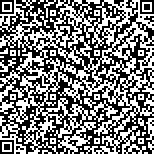本文已被:浏览 2564次 下载 4371次
Received:July 10, 2018 Published Online:December 20, 2018
Received:July 10, 2018 Published Online:December 20, 2018
中文摘要: 目的 探讨降糖精对早期糖尿病肾病(DN)患者疗效及尿微量白蛋白(UMA)的影响。 方法 连续选择2016年8月至2017年9月明确诊断DN的患者42例,随机分为对照组与观察组,每组各21例。对照组予以降糖、降压等常规西医治疗,观察组在对照组治疗基础上联合南通市中医院自制制剂降糖精(批准文号:苏药制字Z04001366,含黄芪、制黄精、薏苡仁、葛根、山药、生山楂、水蛭、白芥子等)
治疗,每日3次,每次10 g,温水冲服。两组疗程均为8周。分别观察两组患者治疗前后UMA、尿β2微球蛋白(β2-MG)、血尿素氮(BUN)及血肌酐(SCr)等指标变化情况。并结合患者临床症状及体征改善情况评价不同方案间疗效的差异。此外,分别观察两组患者药物相关不良反应发生情况以评价其安全性。 结果 观察组患者治疗总有效率为85.71%,较对照组(66.67%)略有升高,但差异无统计学意义(P>0.05)。治疗前两组患者中医症候积分无统计学差异(P>0.05),治疗后2、4、8周,两组患者中医症候积分比治疗前明显下降,且观察组低于对照组(P<0.05)。治疗前两组患者残余肾功能(RRF)和尿量无统计学差异(P>0.05);治疗后,两组患者RRF和尿量均比治疗前明显下降(P<0.01),且对照组低于观察组(P<0.05,P<0.01)。治疗后,两组患者的UMA、β2-MG、BUN水平较治疗前均有显著下降,且观察组患者UMA及β2-MG水平较对照组显著降低,差异有统计学意义(P<0.05)。两组患者药物相关不良反应发生率间未见统计学差异(P>0.05)。两组患者治疗过程中均未见明显药物相关不良反应发生。 结论 降糖精颗粒可显著提高早期DN患者的临床疗效,并能降低患者UMA、β2-MG及BUN水平,且用药过程安全性良好。
Abstract:Objective To investigate the influences of Jiangtangjing granule on the curative effect of early diabetic nephropathy (DN) and on urinary microalbumin (UMA). Methods Forty-two patients with confirmed DN from August 2016 to September 2017 were selected and randomly divided into control group and observation group (n=21, each). The routine western medicine such as hypoglycemia and hypotension was given in control group, and the Jiangtangjing granule[self-made preparations of Nantong Hospital of Traditional Chinese Medicine, approval number:Z04001366, containing Huangqi (Astragalus propinquus), Huangjing (Polygonatumsibiricum), Yiyi (Coixlacryma-jobi seed), Gegen (Pueraria lobata root), Shanyao (Dioscoreapolystachya), Shanzha (Crataeguscuneata), Shuizhi (Hirudomedicinalis) and Baijiezi (Sinapis alba seed)] was added in observation group based on the routine treatment. All patients took medicine 3 times a day, 10 g each time with warm water for 8 weeks in both two groups. The change in the levels of UMA, urinary beta-2-microglobulin (β2-MG), blood urea nitrogen (BUN) and serum creatinine (SCr) were observed before and after treatment; the difference of curative effect was evaluated based on the improvement of clinical symptoms and signs; the incidence of adverse drug reactions (ADR) was observed to evaluate their safety in two groups. Results The total effective rate was 85. 71% in observation group and 66. 67% in control group, but there was no statistical difference (P>0.05). Before treatment, there was no significant difference in Traditional Chinese Medicine (TCM) syndrome scores between two groups (P>0.05). After 2-, 4-and 8-week of treatment, TCM symptom scores decreased significantly compared with those before treatment in both two groups, and they were significantly lower in observation group than those in control group ( all P<0.05). Before treatment, there were no significant differences in residual renal function (RRF) and urine volume between two groups (P>0.05). After treatment, RRF and urine volume were significantly lower than those before treatment in two groups and decreased significantly in observation group compared with control group (P<0.05) ; UMA, β2-MG, BUN and other indicators were significantly lower than those before treatment in both two groups, and UMA and β2-MG in observation group were significantly lower than those in control group (all P<0.05). No obvious adverse drug reactions occurred during the treatment in both two groups without statistical difference in the incidence of drug related adverse reactions between two groups (P>0.05). Conclusion Jiangtangjing granule can significantly improve the clinical efficacy of early DN patients and reduce the levels of UMA, β2-MG and BUN. The safety of medication-use process is good.
文章编号: 中图分类号: 文献标志码:A
基金项目:
| Author Name | Affiliation |
| XUE Li, YUAN Yan-juan, SU Min | Department of Renal Endocrinology, Nantong Hospital of Traditional Chinese Medicine, Nantong, Jiangsu 226001, China |
| Author Name | Affiliation |
| XUE Li, YUAN Yan-juan, SU Min | Department of Renal Endocrinology, Nantong Hospital of Traditional Chinese Medicine, Nantong, Jiangsu 226001, China |
引用文本:
